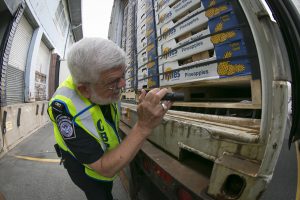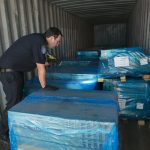Not Another Customs Exam! Part 1
Uh oh… your container has been flagged for an exam.
You insist you haven’t done anything wrong! We believe you. Exams are just a part of the international shipping world that we’ve all grown to know and tolerate. Under 19 USC 1467, any shipment imported into the United States can be examined by Customs and Border Protection.
Per CBP’s publication on Importing into the U.S.
“Examination of goods and documents is necessary to determine, among other things:
The value of the goods for customs purposes and their dutiable status,
Whether the goods must be marked with their country of origin or require special marking or labeling. If so, whether they are marked in the manner required,
Whether the shipment contains prohibited articles,
Whether the goods are correctly invoiced,
Whether the goods are in excess of the invoiced quantities or a shortage exists,
Whether the shipment contains illegal narcotics.”
CBP doesn’t explain exactly why containers are flagged, but details such as origin country, shipper, importer and tariff code are taken into consideration.
To add insult to injury, the consignee (you) will be responsible for any costs associated with the exam. CBP does not charge for the exam, but fees from the Centralized Examination Station (CES), demurrage, transportation to/from the exam site, and storage may accrue during the exam period.
North American 3PL (NA3PL) has put together a great list explaining the different types of exams.

Agriculture Specialist performing a tailgate/backdoor exam. Photo by James Tourtellotte for CBP
- X-Ray Exam/Vehicle and Cargo Inspection Systems Exam (VACIS)/Non-Intrusive Inspection (NII))
- Per NA3PL, “VACIS uses gamma ray technology to produce images of tankers, commercial trucks, sea and air containers, and other vehicles for contraband such as drugs, weapons, and currency. This examination does not break the seal on your container, and is usually completed ship-side or within the port terminal compound.”
- Tailgate/Backdoor Exam
- The container is moved to an exam area close to the port and the back of the container is opened. “The seal is removed and, pending any suspicious indicators, could at that time be flagged for a more intensive examination or released,” as explained by NA3PL.
- Contraband Enforcement Team (CET) Exam/Intensive Exam.
- The container is actually moved to a different facility (such as the Oakland CES belonging to NA3PL), examined and, if necessary, unloaded.
Click here for part two to see some tips and tricks that can help reduce the downtime and may even decrease the frequency of customs exams.



